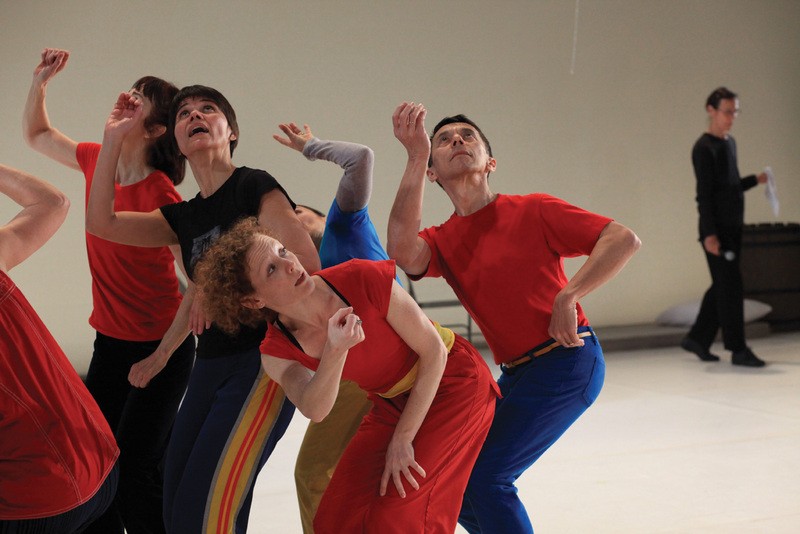
Yvonne Rainer (picture rear right) and dancers performing Assisted Living: Good Sports 2. Yvonne Rainer's works will be performed at Dia:Beacon this month, in a series lasting through next year.
Choreographer Yvonne Rainer likes to blur the lines between “the business of being looked at and looking” and the esoteric “fourth wall” of proscenium stages. As a result, her dancers remain on stage even when they aren’t part of the choreography. Not having the opportunity to imagine what dancers may be doing in the wings gives the audience a better ability to be as aware of themselves as they are of the performance. Less opportunity for the spectator to morph choreography into “spectacle.” “The self is at best irrelevant and at worst a distraction from the real business of dancing,” says Rainer, who will illustrate this point at Dia:Beacon over three weekends of revivals and new works during the next six months.
Arriving in Manhattan from California in 1956 to study acting, Rainer became disenchanted by the theater’s distinction between what was or wasn’t “real.” Having studied dance as a child, she switched from acting to modern dance classes with Martha Graham and with Merce Cunningham, who influenced her with his compositional methods of chance and improvisation when she began to choreograph in 1960.
A member of the illustrious second generation of postmodern dancers, Rainer co-founded the seminal Judson Dance Theater in 1962 with Steve Paxton, who is credited for inventing “contact improvisation.” A collective of a dozen or so (now famous)experimental dancer-choreographers housed in the arts-friendly Judson Church in Greenwich Village, JTD’s members were described as “aesthetic adventurers” by esteemed dance critic Jack Anderson. Born during a rich and heady time for the arts in New York, Rainer described JTD’s coming together as, “There was new ground to be broken and we were standing on it.”
Highly trained themselves, JTD members used one another, nondancers, and prominent NYC artists in their choreography, as well as appeared in experimental choreography by painters and sculptors such as Robert Morris. They eschewed emotionality, took dance off the proscenium stage, brought it into the round and outdoor locations, danced in the nude, pioneered the use of smooth, flowing repetition and patterns, and incorporated everyday movements and activities such as dragging mattresses, perching on seesaws and echoing movements from rooftop to rooftop. The influence of JTD’s movement purely for movement’s sake can still be seen in the work of today’s modern and pop choreographers as they perform in parks, streets, on facades and in music videos.
Projecting films behind her choreography in 1968, by 1975 Rainer had switched her focus entirely to filmmaking, which remained her passion for 30 years. Dealing with feminist issues, she made seven experimental feature films and many shorts. Returning to choreography in 2000 (when Baryshnikov offered her a commission for his White Oak Dance Project), Rainer realized she was more comfortable making dances then films, feeling the return to dance was like coming home.
Among the revivals Rainer will be presenting is Trio A (originally a section of The Mind Is A Muscle), perhaps her best-known work. Performed in silence, the series of simultaneous solos with upper and lower body movement juxtapositions repeated in different directions at a steady pace makes for endlessly fascinating possibilities. Also an exercise in focus (and ego), the dancers try to avoid looking at the audience, which denies them the pleasure they might derive from being looked at while dancing.
Currently working on a piece for the Martha Graham Dance Company, author of nearly a dozen books, the recipient of Guggenheim Fellowships, Rockefeller Fellowships and a MacArthur Fellowship, Rainer is currently professor of studio art (performance, film history) at UC Irvine.
Each Dia:Beacon program will contain different configurations of five revivals and three recent works from Rainer’s repertoire. The first programs will take place on Saturday, October 22, and Sunday, October 23, at 1pm and 3pm. Tickets: $35 (general admission); $28 (students/seniors); $24.50 (members).
(845) 440-0100; www.diabeacon.org.











